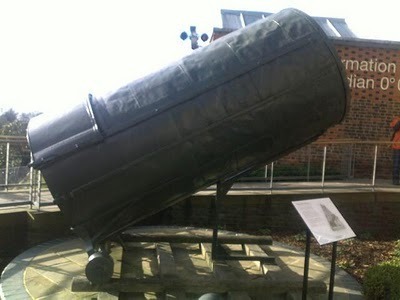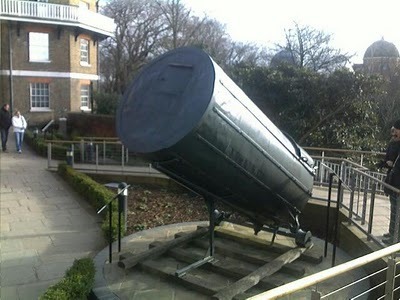William Herschel's telescope
Space school today was on identifying constellations, and I've drawn spidery diagrams of such things as Boote, Canis Major and the the big and little bears.
Since I was at the Royal Observatory, I also took advantage of the sunshine to snap some pics of William Herschel's 40-foot telescope, which I mentioned in my recent post on the origins of the Big Bang theory.

 The caption in front of the telescope says:
The caption in front of the telescope says:
Last year, I also posted about another telescope in London, the Monument.
Since I was at the Royal Observatory, I also took advantage of the sunshine to snap some pics of William Herschel's 40-foot telescope, which I mentioned in my recent post on the origins of the Big Bang theory.

 The caption in front of the telescope says:
The caption in front of the telescope says:"This is the remaining section of a 40-foot (12m) reflecting telescope, built for the astronomer William Herschel, who became famous for his discovery of the planet Uranus in 1781.NB you might want to do that before 8 March 2011, while it's still free.
The telescope was the largest in the world and cost over £4000, paid for by King George III. Completed in 1789 and erected at Herschel's home near Slough, about 30 miles (45km) west of Greenwich, it soon became a tourist attraction. Some people likened it to the Colossus of Rhodes, and it was even marked on the 1830 Ordnance Survey map of the area.
Sadly, the Herschels did not use the great telescope for much serious astronomy since it was difficult to set up and maintain. William's son had it dismantled in 1840. Most of the tube was destroyed when a tree fell on it 30 years later.
You can find out more about William Herschel's work in the Weller Astronomy Galleries in the Astronomy Centre on this site."
Last year, I also posted about another telescope in London, the Monument.
Published on January 30, 2011 14:14
No comments have been added yet.
Simon Guerrier's Blog
- Simon Guerrier's profile
- 60 followers
Simon Guerrier isn't a Goodreads Author
(yet),
but they
do have a blog,
so here are some recent posts imported from
their feed.



